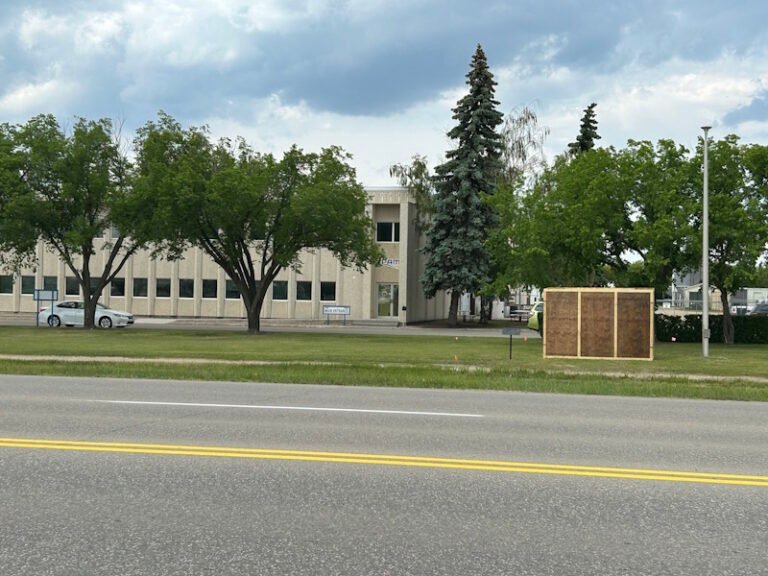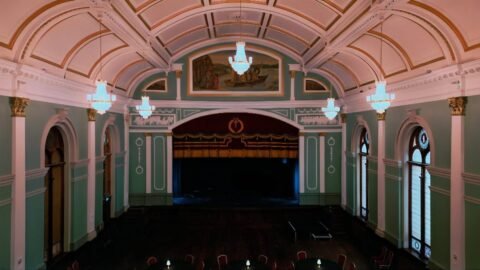A new public art installation is set to be unveiled in Humboldt on Thursday, June 26, as part of a larger event hosted by Prairie Agricultural Machinery Institute (PAMI). The sculpture, currently hidden beneath a large wooden enclosure along Highway 5, is already stirring curiosity among locals.
The project, led by the Public Art Committee in partnership with the Humboldt and District Museum, aims to honor the region’s deep roots in agriculture and manufacturing. The installation was created by Humboldt-based metal artist Tyler Dies, following a competitive call for submissions.
“We really wanted to honour the heritage of the agricultural manufacturing companies in the region,” said Jennifer Fitzpatrick, Director of Cultural Services for the City of Humboldt. “The public art committee identified that as a theme, and we reached out to artists with that focus in mind.”
Dies’ sculpture reflects what many in the area know as the “Iron Triangle”—a term used to describe the cluster of influential manufacturing companies in the region. Major sponsors of the project include Bourgault Tillage Tools, Doepker Industries, Schulte Industries, Michel Industries, and PAMI.
“When PAMI was approached about sponsorship, they suggested this very site for the sculpture,” Fitzpatrick added. “We were excited to place the piece in front of PAMI and create something that speaks to the area’s industrial legacy.”
While the sculpture remains under wraps until the official unveiling, Dies offered some insight into the creative process and inspiration behind it.
“The piece is a life-size horse—maybe a little larger—that symbolizes the westward movement of settlers,” said Dies. “It represents how workhorses enabled the breaking of land, which led to successful farming and eventually the rise of manufacturing innovation in the area.”
Dies used components donated by each manufacturer to construct the sculpture, giving the piece a unique authenticity.
“Farmers and plant workers alike will recognize certain parts and know exactly where they came from,” he said.
The installation will remain at the PAMI site for at least ten years under an agreement with the organization. Fitzpatrick sees it as a lasting tribute not only to the region’s industrial past but to its cultural distinctiveness.
“Cities can often start to look very much alike,” she said. “Through meaningful public art that reflects our local heritage, we can truly differentiate ourselves and tell our own story.”
The unveiling ceremony will take place at 2:30 p.m. on June 26 in conjunction with PAMI’s own event, and the public is invited to attend.





